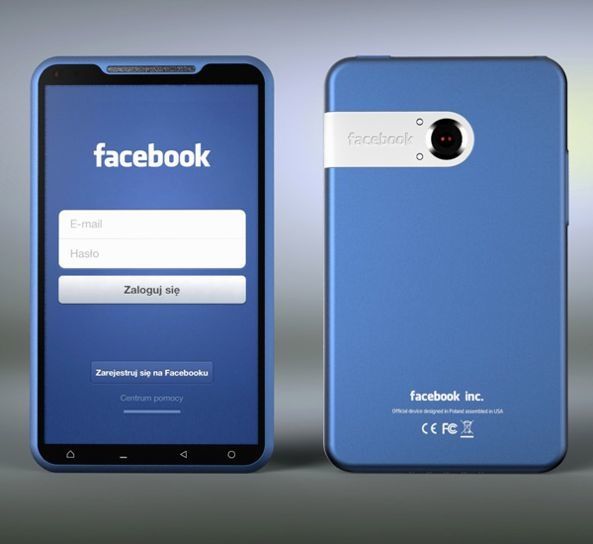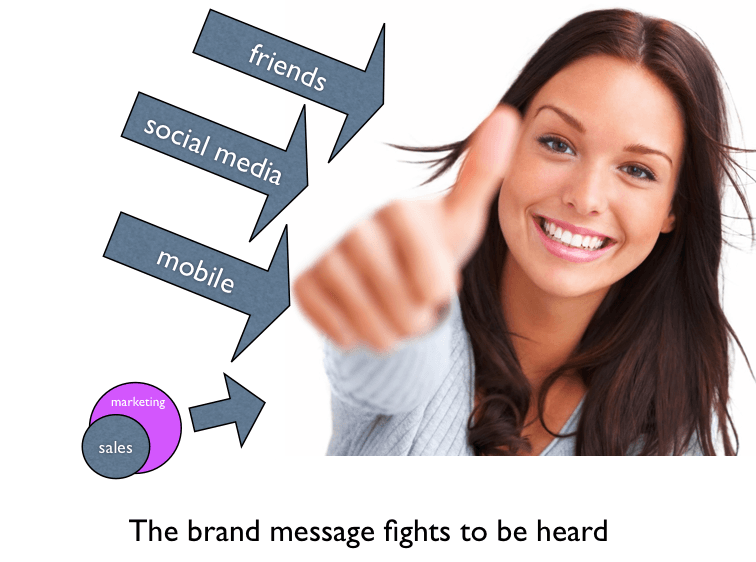On the heels of the bloody 2Q earnings report by Facebook, the subject of the Facebook phone has become a hot topic, promptly denied by Mark Zuckerberg.

The question of the Facebook phone garners a good amount of negativity, probably associated with a fear for privacy. There was already great controversy back in February 2012 when it was revealed by the London Sunday Times that Facebook had access on Android phones to the content of the SMS text messages (read the story at TechWeekEurope). If Facebook had a more positive aura to its brand, I think its user base would be more favorable to an FB phone. As it is, there are plenty of detractors, not to mention sellers on the stock market. But, for me, the question is less about a Facebook phone and more about the impact and importance of a “social phone.”
I have long been vaunting the need for branding to get more personal, which means that executive and marketing teams must get more comfortable crossing the chasm between professional and personal life. In a world overrun with spam (notwithstanding the termination of the insidious Grum spambot) and unsolicited messages, access to people’s inbox is an outright strategic issue for digital marketers. {Tweet this!} Here are some of the key “personal” spaces that marketers are/will be targeting:
- of course, there is the standard email inbox – personal and/or professional
- Facebook messages (and, who knows, Path messages?)
- Twitter direct messages (where the brand needs the subscriber to be following)
- Linkedin inbox (especially for B2B)
- in Google+ circles
- mobile telephone for the direct call
- SMS inbox on the mobile phone (ie. the professional blackberry and the personal iPhone)
- messages in foursquare or other geolocalization services
- instagram messages
- YouTube messages?
- connected televisions?
- in the RSS feed
- among the bookmarks (including, most emphatically, in the bookmarking services such as Delicious or StumbleUpon)
- inline in online games such as Farmville or Angry Birds
- still the personal mailbox (at home) — wouldn’t it be nice to receive a letter from time to time?
The list is not comprehensive and it already starts looking long and complex. This makes for a nightmare for CRM teams, both technologically and philosophically speaking.

I wager that a key challenge for digital marketing in the future will be to gain access to these inboxes. In fact, the challenge exists already today according to the level of digital maturity of the marketing teams. As people find and/or demand ways to screen out the unsolicited messages, the “social graph” will be one of the most likely sources for filtering out garbage. In other words, users will have a setting that enables them to receive message only from friends, or friends of friends. The same could be true for the mobile, the quintessence of a personal device, where unwanted communication can definitely feel like a violation. With a Facebook phone, we will be one step closer to the “social mobile graph.” In this concept, much like the with Google, gmail, Google+ and Android, we could have all systems converging.
And, once we have come to grips with all that, then we should consider the very real possibility of mobile payment, facilitating not just mCommerce, but the wallet in your phone. Talk about a powerful one-stop-shop: a socially enhanced, fully loaded and connected, payment vehicle.
Digital marketing must learn to respect the personal spaces, vying for an opt in via legitimate methods and compelling content. Only in this way will friends willingly accept to pass along their contacts. The social phone may well be the ultimate in word of mouth marketing, no?











Good blog Minter. As mobile technology is increasing now a days, people can access all the information online through digital marketing channels. There is an interesting video from Infosys BrandEdge about digital marketing. You should have a look at it. http://bit.ly/Ob7L0r
How do you know about InfoSys, Arjun?
I was looking for digital marketing platforms and found this video interesting. Thought of sharing it to you.
Thanks,
Arjun